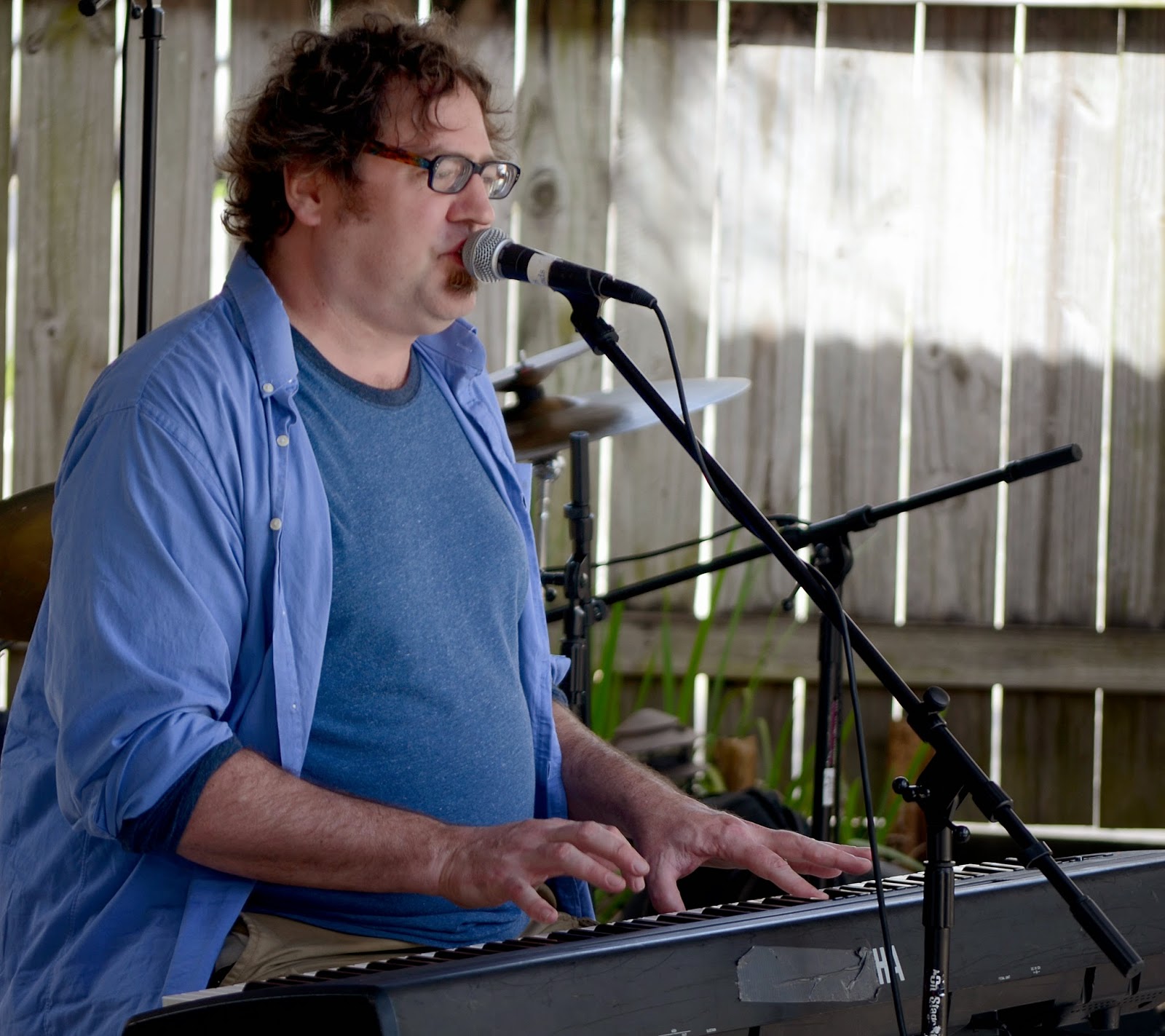Only a few months after playing at the
DGA crawfish boil in March 2013, legendary zydeco musician Warren Prejean died
on August 3, 2013 at the age of 64. Prejean, a retired truck driver, devoted
much of his life to playing and promoting zydeco.
| Warren Prejean on the rub board |
Zydeco fused Cajun music with blues
and R&B. Cajun music itself is a union of French, Irish, Celtic, German,
Latin, and Appalachian styles. When mixed together, zydeco represents a truly
American musical form. The word zydeco itself allegedly originates from a
phrase spoken in the regional French, "leh-zy-dee-co sohn pah
salay...") meaning roughly "the snap beans aren't salty". This
phrase has been referred to as meaning "I'm so poor, I can't afford any
salt meat for the beans." Zydeco music relies on a special instrument,
known as a vest frottoir (or rub board). The frottoir is a percussion
instrument, generally made out of pressed, corrugated stainless steel and is worn
over the shoulders. A musician then drags a metal tool (or spoon or something
similar) up and down the rub board to make music. Zydeco, like other native
Louisiana traditions, takes the best parts of a myriad of cultures and creates something
unique.
Here is Prejean with his band at the 2012 meeting of the American Society of Trial Consultants in New Orleans.
In
recent years, Prejean played with the Creole Zydeco Farmers. Based in
Lafayette, Louisiana and founded in 1989, the band derived its name from its
style of music and the agricultural history of Lafayette parish. All of the
band’s members, including Warren Prejean, have familial ties to the region.
Prejean provided vocals and played the accordion. Prejean performed with the
band across Canada and the United States. The Creole Zydeco Farmers have also
toured in Europe with performances in Greece, Austria, Belgium, France,
Germany, Italy, Switzerland, Luxembourg, and Holland. They are also a regular
performer at New Orleans Jazz Fest.
RIP Warren Prejean.
















